Blog Archives
Why Russians celebrate the New Year, and not Christmas, with New Year’s Tree? The Origin of ‘Calendar’ and Christmas/New Year’s Forbidden History
Why Russians celebrate the New Year, and not Christmas, with New Year’s Tree?
That’s because the tradition of celebrating the end of one year and the beginning of the next with a decorated and lit up green tree, symbolizing the new growth and new prosperity is a pagan tradition that by far predates Christianity. Much later it was adopted by Christianity to coincide with the designated birth of Christ – Dec. 25. In fact the Western Christmas continues symbolizing death and rebirth. The year’s shortest day is around this time of year, during Dec 22 Winter Equinox. After this the day again begins getting longer, thus denoting rebirth of the new year and new hope. The tradition itself predates any cultures and any religion known today – it was born in the days when humans were still united.
The proper Russian Orthodox Christian Christmas (Rus: Рождество, OR full name: Рождество Христово Rozhdestvo Khristovo) is celebrated one week after New Year’s, on January 6-7. The tradition for that holiday is to eat ‘sviata vecherya, ‘ aka, the Sacred Supper (Holy Supper) thus repeating with your friends and family the last supper of Jesus. This is often hosted by local churches, or is eaten at home. After that, the Vsenoshchnaya (Rus: Bсенощная) – All Night Vigil – in the church lasts through the night. Krestniy Hod is usually at midnight, during which everyone together walks around the church, the block, and/or an area of a city with candles, icons and church banners, while singing Russian church songs. This tradition goes very deep in history, back to the ancient Vedic/pagan times as well. It is a combined blessing and space clearing of one’s land, ushering in the light and positive affirmation for all present.
Krestniy Hod is also performed for the Russian Easter (Rus: Paskha). I’ve gone to a couple of these in Manhattan in the ’90s, and it was pretty cool. Police had stopped the traffic in the part of the upper East Side around the 92-93 Street, to allow the Krestniy Hod through.
And of course, the traditional Russian ice water bathing – Rus: Rozhdestvenskie Kupania! Should never forget about that! Extremely cold, but you really do feel like you’ve been reborn – if you can stomach it! I have a pic of the Russian ice water bathing in my classic post: How Russians Celebrate New Year: Happy NY 2014 and Happy 100,000 Visits to Lada Ray Blog!
There is also what is called ‘the Old New Year,’ still celebrated by many two weeks after traditional New Year, on Jan. 14-15 of the contemporary calendar. Why is that? What is now called the ‘Old New Year’ was the actual New Year’s in pre-1917 Revolution Russia.
The Origin of ‘Calendar’
& Christmas/New Year’s FORBIDDEN HISTORY!
What is now called the ‘Old New Year’ was the actual New Year’s date according to the old Julian Calendar, where leap year wasn’t taken into account. Lenin changed that in 1918 to coincide with the new Western calendar (Gregorian Calendar). Initially, the original Russian Vedic Calendar was thrown out and substituted for the Western one by Peter the Great, counting years from the birth of Christ.
However, in doing so, much of history was distorted and silenced. Now, the truth is being re-discovered. In reality, the true ancient Russian calendar (actually, the calendar shared by all Slavic cultures) was over 7,500 years old. More precisely, today would be the Year 7523, and the year 2016 would be the Year 7524 ‘Ot Sotvorenia Mira’ (Eng translation: from “the Creation of Peace” – which is most of the time incorrectly interpreted to mean from “the Creation of the World, ‘world’ and ‘peace’ sounding very similar).
In reality, that still wasn’t the beginning of the Rus/Slavic culture. Rather, in that calendar Year One was counted from the Peace Treaty with the Dragon. Some interpret it to mean China, but I have a different, much more esoteric theory – one day I’ll share it.
Next, to fit into the new shortened calendar, the history of Russia and other Slavic lands was deliberately shortened and falsified to make it seem less significant and subordinate to other cultures. In reality, the truth appears to be this: over 1000 years ago at least all of Europe, and probably a large part of all of Eurasia, lived by the same old Slavic calendar. The exact date is hard to pinpoint, but roughly we can assume that the year 1000 was some sort of major threshold, another one being 2000 years ago.
The reason the new Western calendar became prevalent has to do with the previous tectonic Earth Shift of this human civilization towards the West: individual, yang, aggressive, assertive, outgoing. In more mundane terms it manifested in the power struggle between various individualistic national identities and separatist overlords’ interests. In religious terms, it was the power struggle between the Vedic/pagan system and the new organized religions. At the same time it was the fight between younger Catholic Vatican and older Orthodox Byzantium, as well as between Christianity and Islam, in which the Vatican and Catholicism won. No surprise there: the Vatican represented the West, which was beginning to gain dominance at the time.
The word Calendar itself is an ancient Rus/Slavic word, not Latin, as many think.
It comes from: Colo-dar – orig. spelling: Kolo-dar. Kolo means ‘circle’ and ‘sun.’ Dar is ancient Rus (used as is to this day) for ‘gift’ and ‘blessing.’ Therefore: Kolo-dar (colo-dar) means the gift of the sun. Alternatively: gift of the circle of the year. This in turn means: the gift, or blessing, of the ever revolving circle of seasons and karma.
How Latin language came to be and where it really came from is a whole different and fascinating mystery altogether. But that’s another story, which I might tell one day.
For now, let’s see how Kolo-dar became Calen-dar. Anyone who studied Latin knows that in it ‘K’ becomes ‘C.’ For example: Kelt becomes Celt. So, the original Kolo became Colo and later was distorted to Cale. Calen = of Cale – this added ‘n’ is also of Rus origin, signifying ‘part of’ or ‘from.’ For example: contemporary Russian word: Kalendar-n-y = part of the calendar, from the calendar.
The contemporary word that shows the evolution of kolo-colo-cale is: ‘calle’ – the word for ‘street’ in Spanish (very similarly sounding words exist in other Romanic languages). A street in the old days, before pavement, was made by constant movement of carriages along a dirt path. Carriages used wheels, or kolo = colo, modified in time to cale. It later became calle.
P.S. In contemporary Russian the word for ‘wheel’ is ‘koleso’: kole-so. The word for a track made by a wheel of a car or carriage is: ‘kole-ya.’ Both, because of the traditional Russian ‘a’ transference in cases of written ‘o,’ are pronounced as ‘kaleso’ and ‘kaleya.’ This is in direct correspondence with cale-calle.
Incidentally, the word ‘alley’ once upon a time made a full turnaround and re-entered – was re-borrowed by – a number of languages from French. In Russian it sounds like ‘alleya.’ But you will easily recognize it as originally descending from the same primary word: kolo – koleya (a track made by a wheel).
This is just a small sampler – several books could be easily filled with such examples. More to come!
Please read this article in conjunction with the original post:
Happy Holidays from FuturisTrendcast and Earth Shift Report!
.
A lot more is revealed in Lada Ray’s
FORBIDDEN HISTORY & FORGOTTEN ORIGINS Webinars!
.

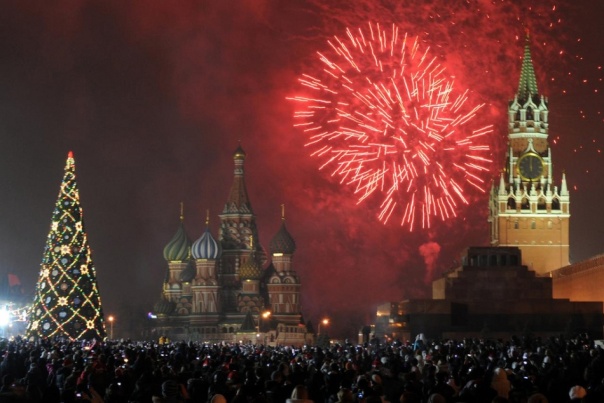

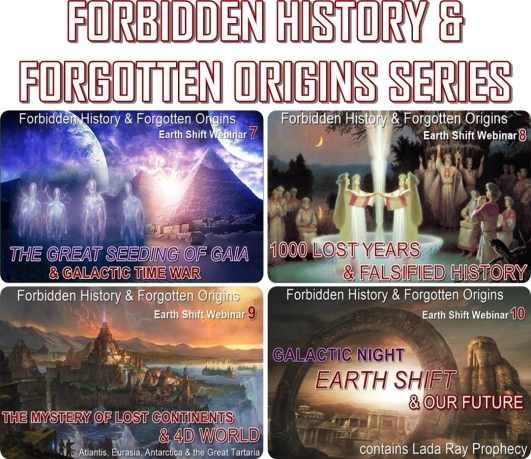

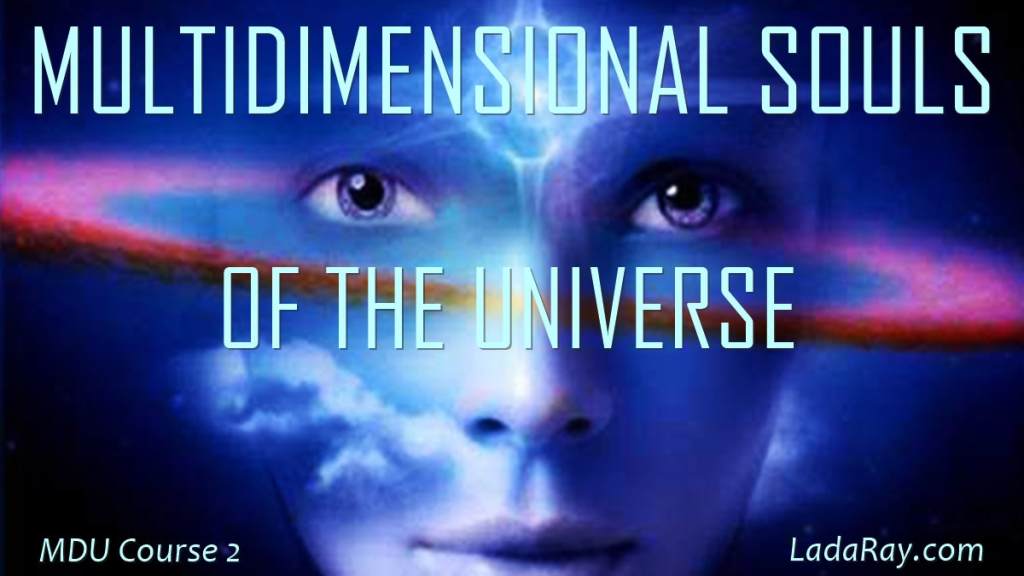



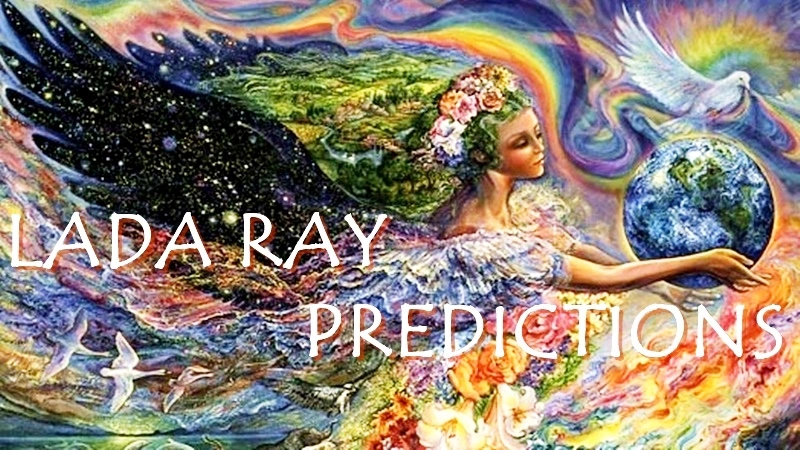
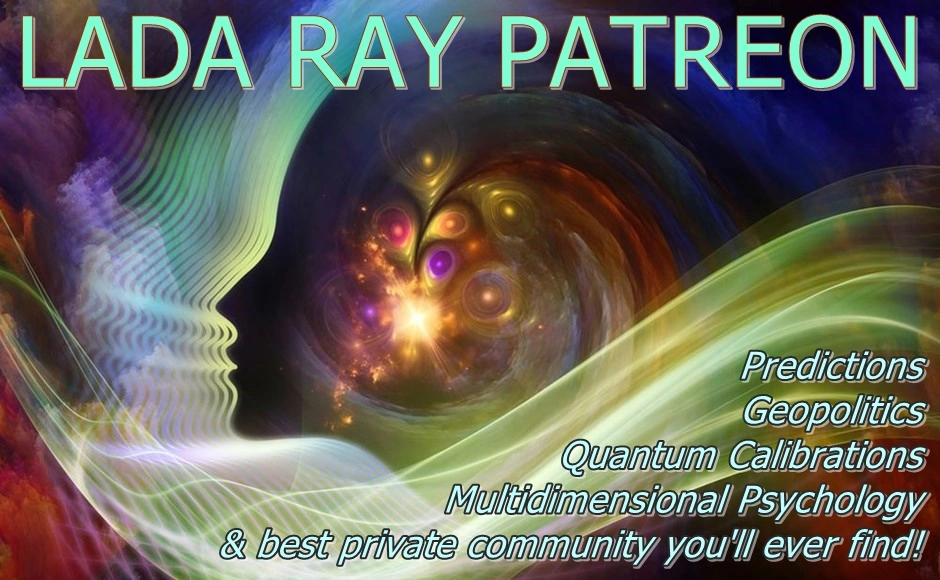


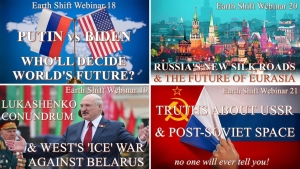
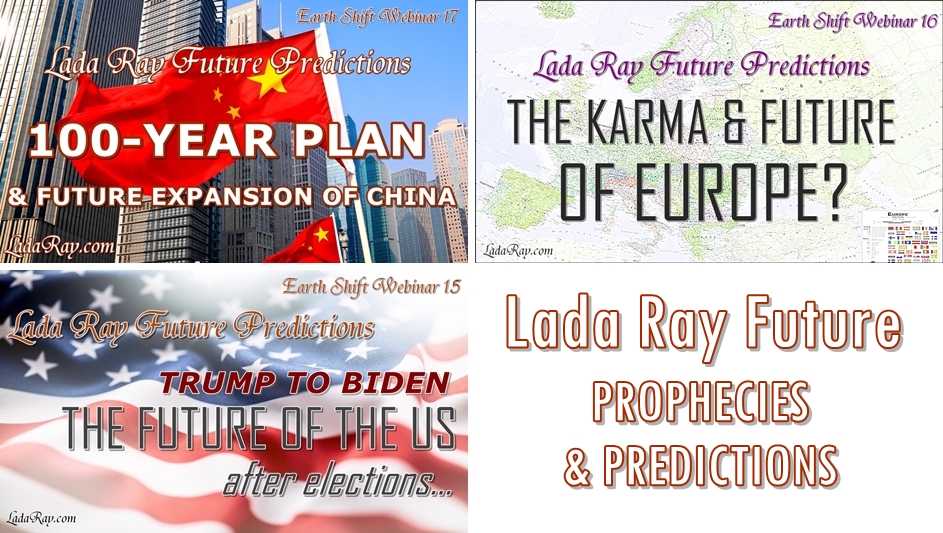
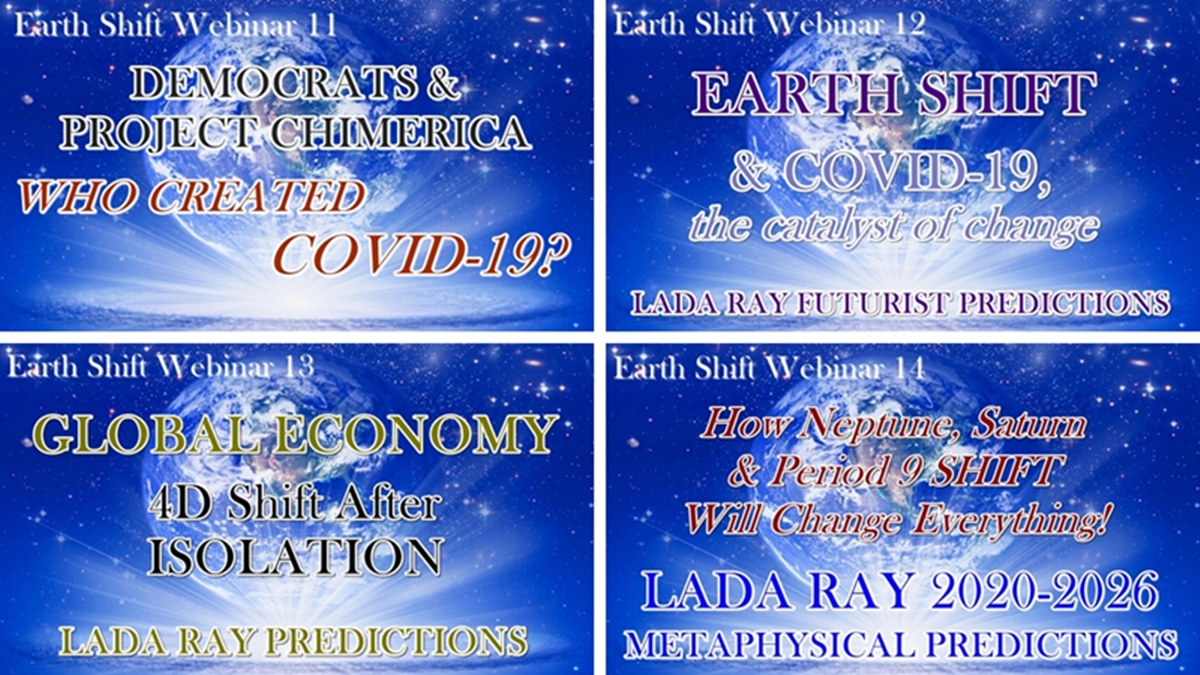

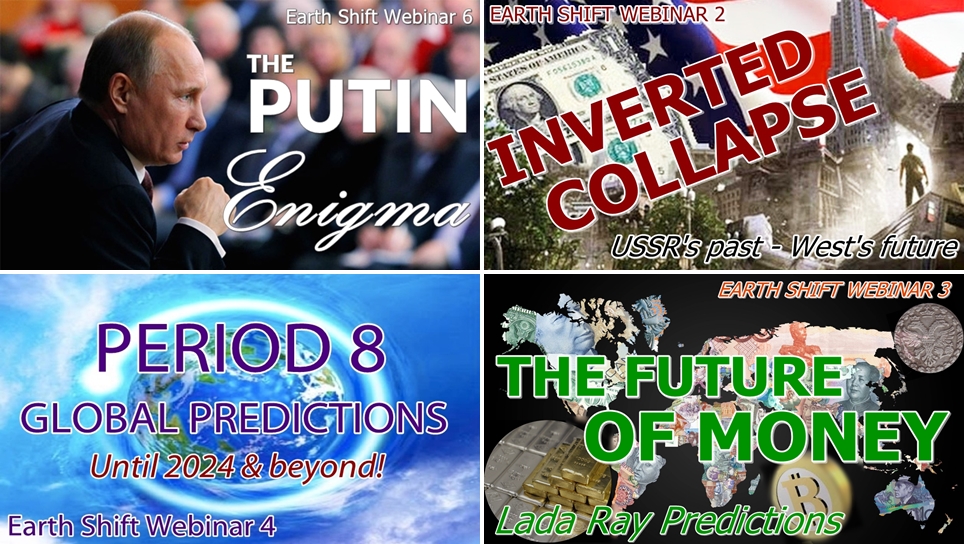




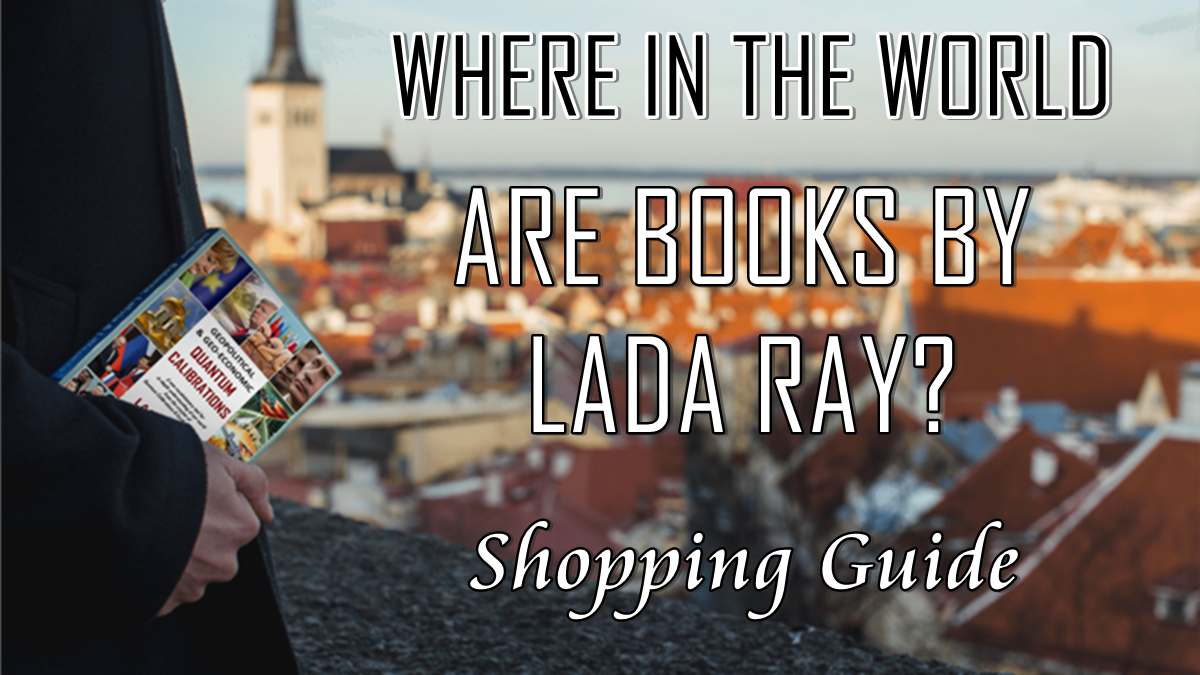
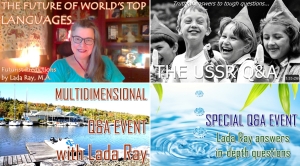

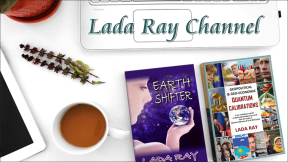


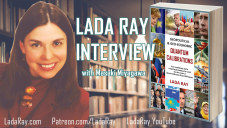

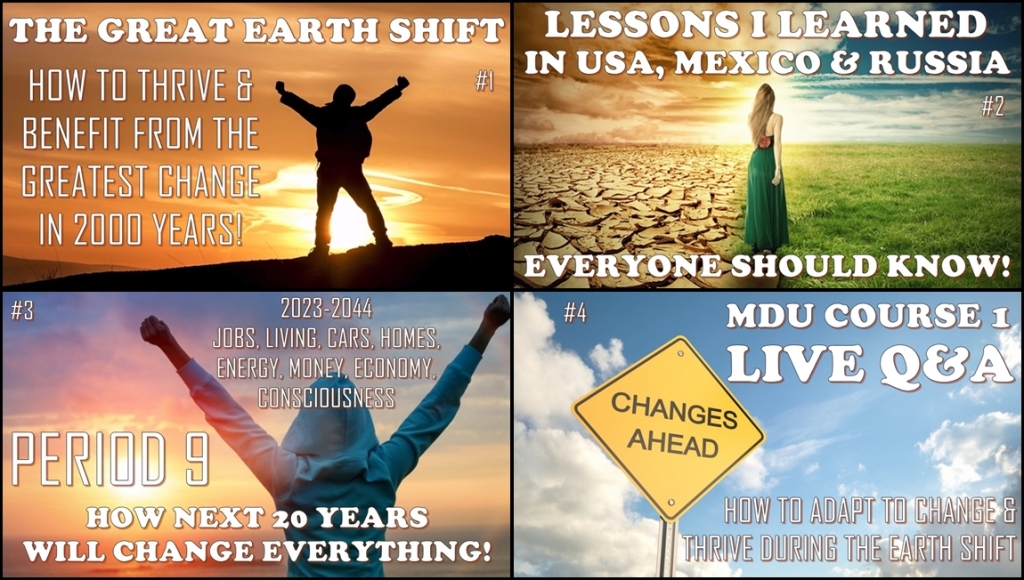
You must be logged in to post a comment.